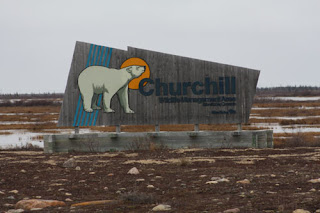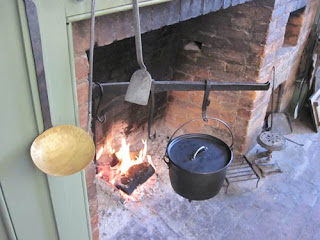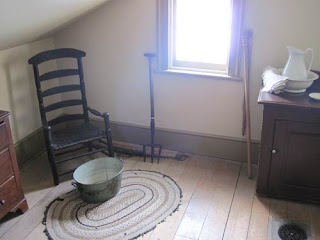Location: Churchill, Manitoba, Canada
Address: Churchill Wildlife Management Area
Date: Oct 2014
Website: www.everythingchurchill.com
Most people come to Churchill with hopes of seeing a polar bear, but as you walk around the town you hope that you will not have an encounter with one of these giant predators. The best way to see the bears is from the safety of a Tundra Buggy as it crawls across the rocky terrain of northern Manitoba. A Tundra Buggy looks sort of like two school buses welded together and then put up on some giant wheels from a construction vehicle. We spent two days inside one of these buggies in search of some big white bears.
We first had to travel from our lodge on red school buses. The buses took us into the Churchill Wildlife Management Area which was just outside of town.
We then had to transfer directly from the bus into the safety of our Tundra Buggy under the watchful eye of our guide. You never know when a bear may be nearby.
The first thing we learned is that polar bears can hide surprisingly well on the tundra. You would think that on a terrain that is mostly grey rock, orange moss, and shallow water, that these white animals would pop right out. In most cases they do, but if a polar bear lays flat it can hide behind even the shortest of bushes.
There are also many white rocks scattered across the tundra. We had a fun time playing "Polar Bear or Rock". Someone would shout out "Bear!" and all the binoculars and cameras would zoom in to inspect the area. Coming to a conclusion proved rather difficult. In one instance, after several minutes of observation, our entire group had determined one white lump to be just a rock. When we returned to that area later in the day we were surprised to see that the rock was walking around.
So far we had only seen a few signs that the bears were there. There were some tracks by the water's edge which were obviously made by some huge paws dragging across the sand.
In fact there were more signs that other Tundra Buggies had been roaming around than bears. There were huge tracks where a Tundra Buggy had taken a wrong turn and its tires had sunk deep into the muddy terrain. Our Tundra Buggy had also headed into the same area and then wisely decided against that route. We wondered what would happen if a Tundra Buggy broke down or got stuck in the mud or rocks? On the second day of our tour we would get our answer.
After much searching we learned that traveling in a Tundra Buggy looking for polar bears is a slow process that requires patience. A glimpse of white was spotted up on a rocky edge. Just as quickly it disappeared again. A helicopter flying overhead turned towards the area. We held our cameras up over our heads as high as we could and fired away. A bear lifted its head above the rocks and looked straight up at the helicopter. Then just as quickly it was gone. Perhaps it had wandered off down the rocks or just put its head down to take a nap. At this time of year polar bears are saving their energy before they face a long hard winter trying to survive out on the sea ice. As the water begins to freeze, more and more bears come to the shoreline waiting to step out onto the ice.
We finally spotted an active polar bear out in the open, way over on the other side of the water. Our guides let us know it may take about an hour to get over to where we could see him better and they could not guarantee the bear would still be there. We took our chances and after bumping and crawling along around to where the bear had been, we pulled up onto some rocks.
Our gamble had paid off as the bear was still there busily digging through whatever had washed up on the shore. You could see the grooves from where the bear had been digging most likely for many hours, if not for days.
We spent some time admiring this bear at work and then it was time for our buggy to make the long trek back to our red school bus. From there it was a drive back to our lodge for the night. Tomorrow would be another day spent bouncing around the tundra in search of the bears and we could hardly wait.
You can read about Day Two here.
Map of Our World
 Tundra Buggy Tour , Tundra Buggy Tour (Digging Bear)
Tundra Buggy Tour , Tundra Buggy Tour (Digging Bear)Post # 98

































